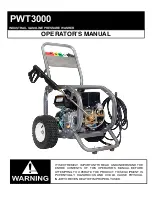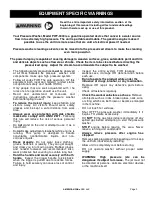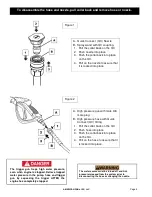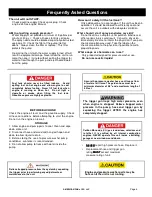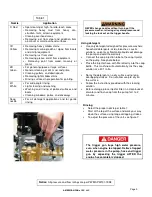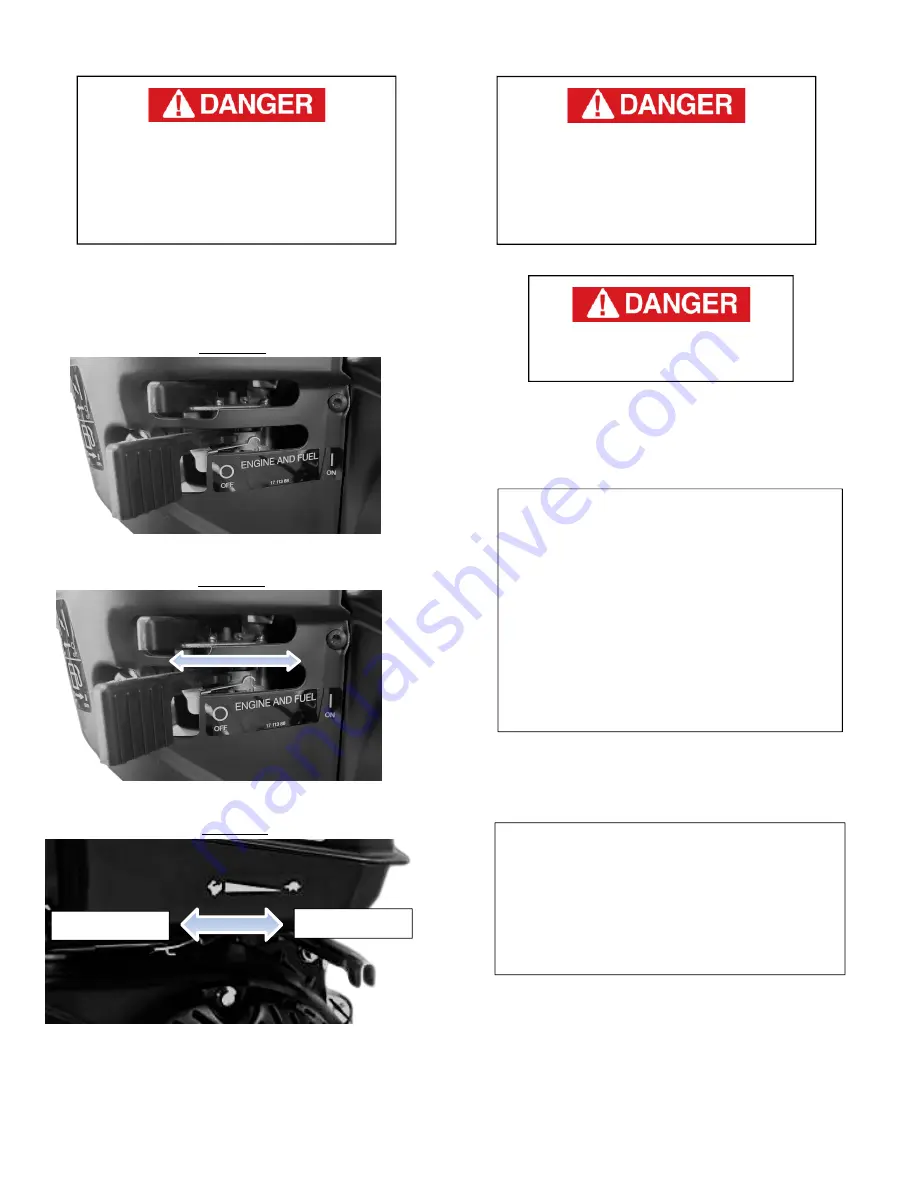
Stored batteries give off explosive hydrogen gas
while recharging. An explosive mixture will
remain around the battery for a period of time
after it has completed recharging. Any spark can
ignite the hydrogen and cause an explosion.
Such an explosion can shatter the battery and
cause blindness or other serious injury.
Avoid smoking, open flames, sparks or any other
source of heat around a battery. Wear protective
goggles, rubber apron and rubber gloves when
working around a battery. Battery electrolyte
fluids are an extremely corrosive sulfuric acid
solution than can cause severe burns. If a spill
occurs, immediately flush with clear water.
Never
short the battery terminals!
Electrical short, shock, burns or
explosion will occur!
Figure 3
Figure
3
Fuel Valve on
Figure
4
Increase
RPM
Decrease
RPM
Figure
5
Starting the unit with manual start
•
Slide
the fuel valve
to the “on”
position.(figure
3
)
•
Slide
the choke to the “closed” or “start”
position. (figure
4
)
•
Assure the throttle is pushed to the left.
(figure
5
)
•
Pull starter grip slowly until resistance is felt.
•
Pull cord briskly
•
Return starter cord gently into the recoil
housing.
•
Move choke to the “open” or run position.
Stopping the engine
•
Rotate key or
ignition
switch
counterclockwise to the
off
position.
•
Rotate the fuel valve to the closed position
for storage, maintenance or transportation.
•
Disconnect battery for storage or
maintenance.
Page 7
AMERICAN FAB of SC, LLC
Summary of Contents for PWT3000
Page 15: ...Notes AMERICAN FAB of SC LLC...
Page 16: ......

